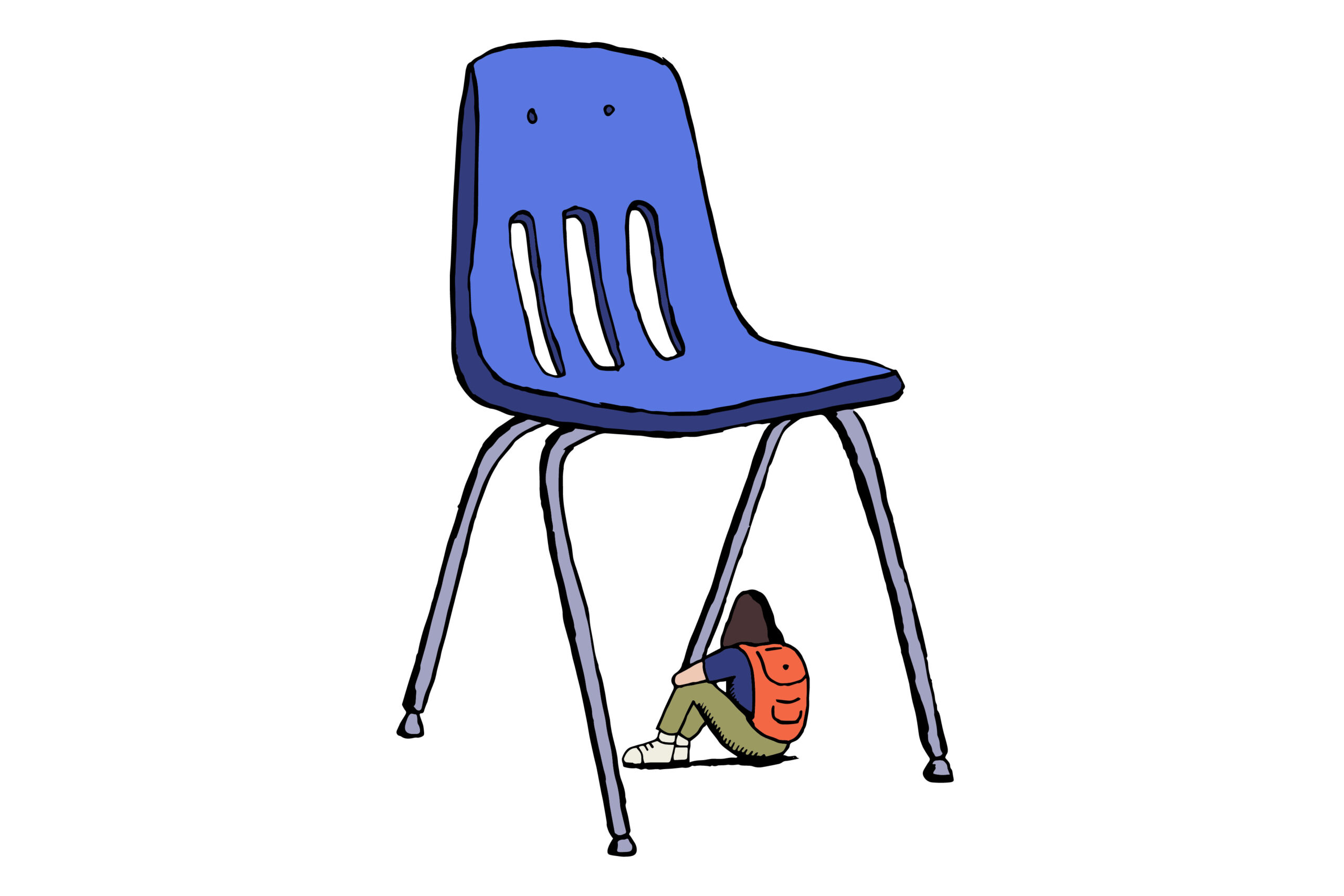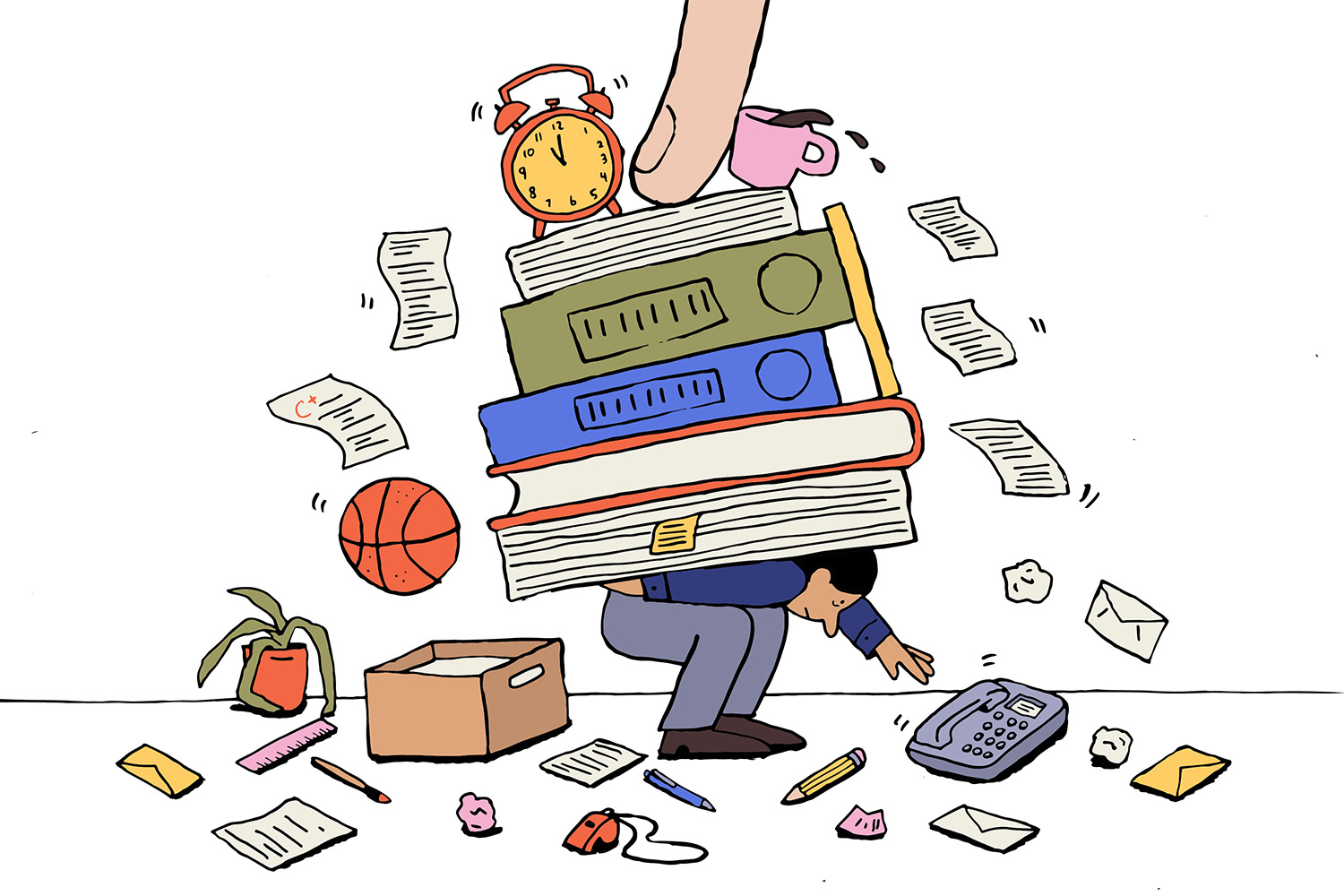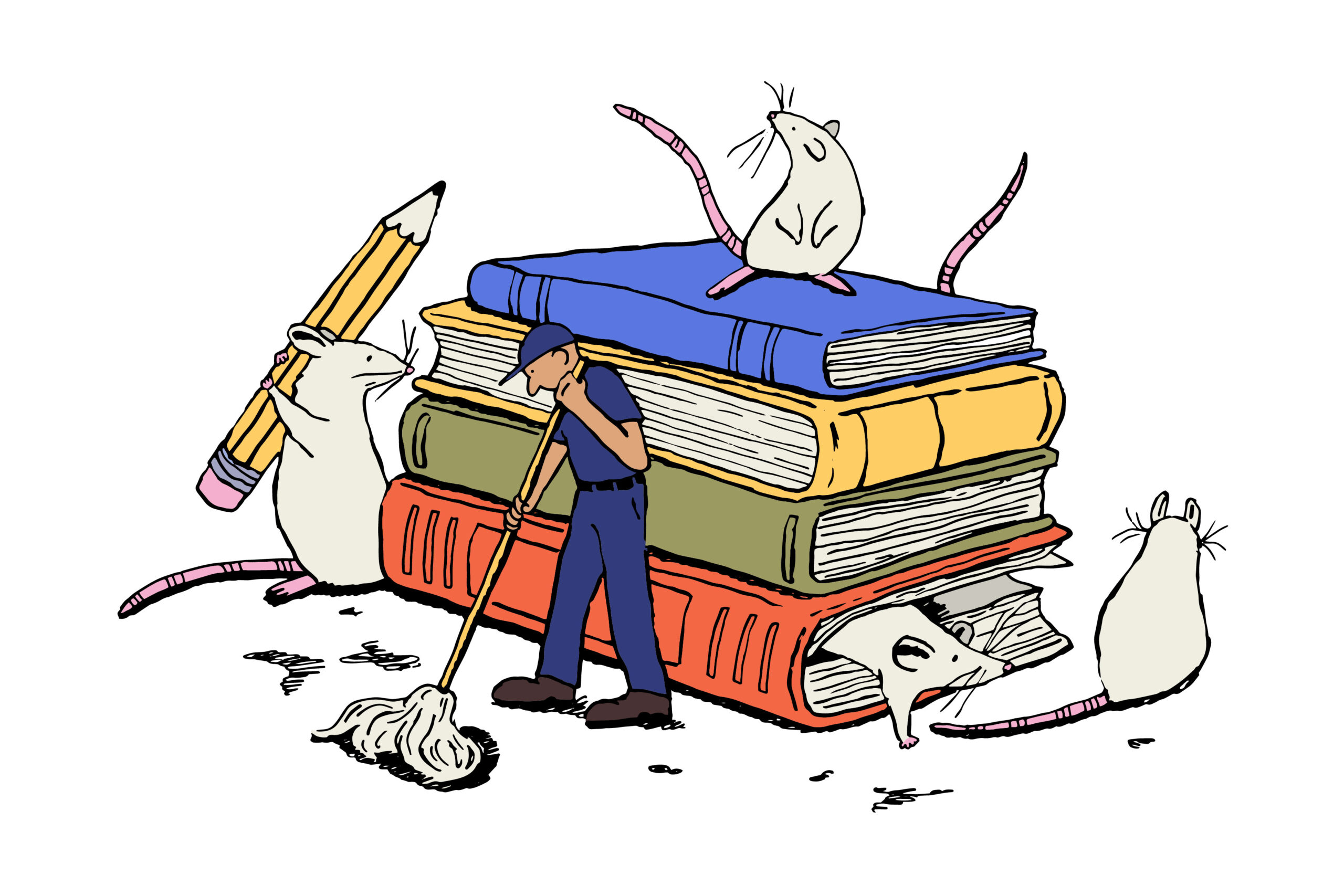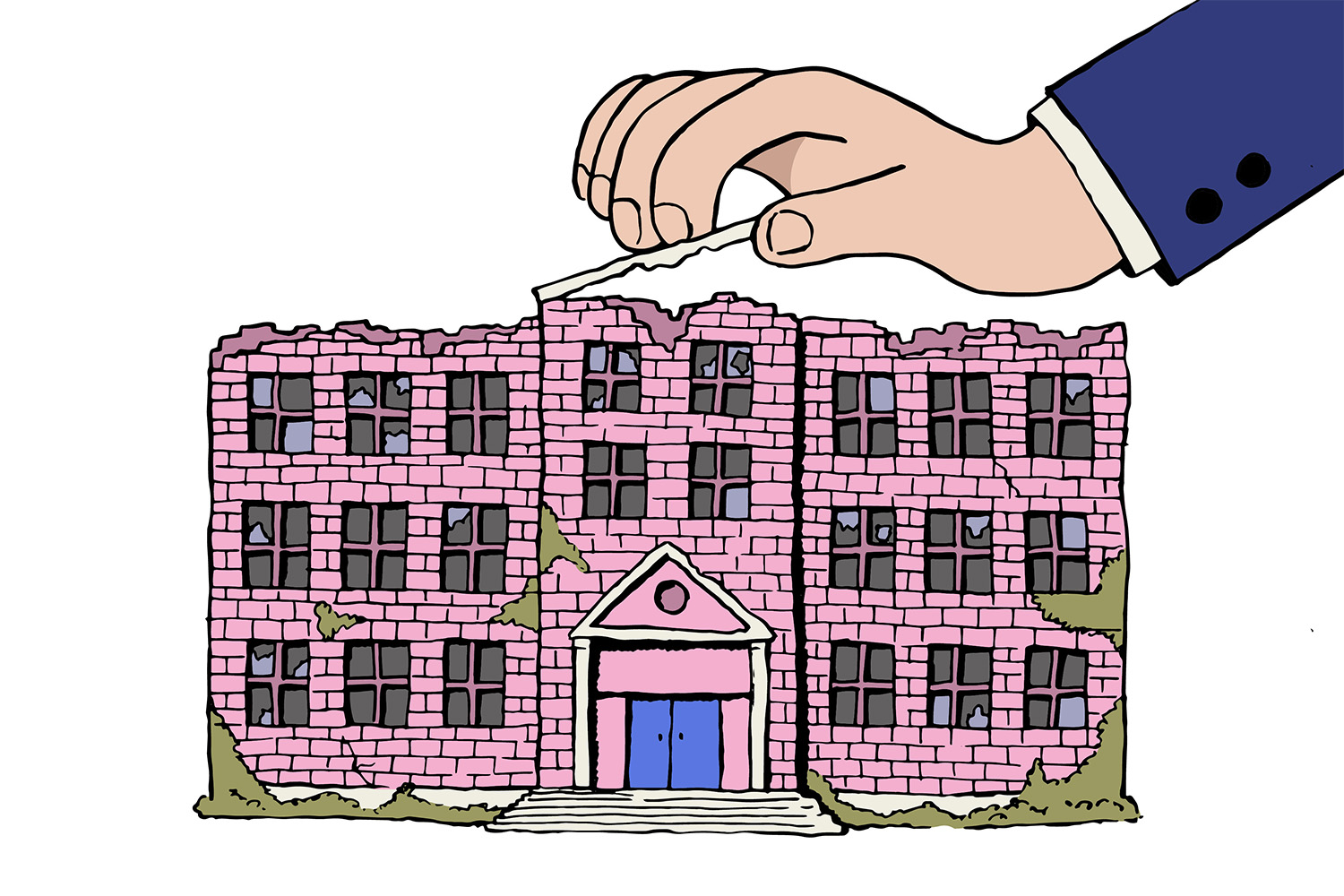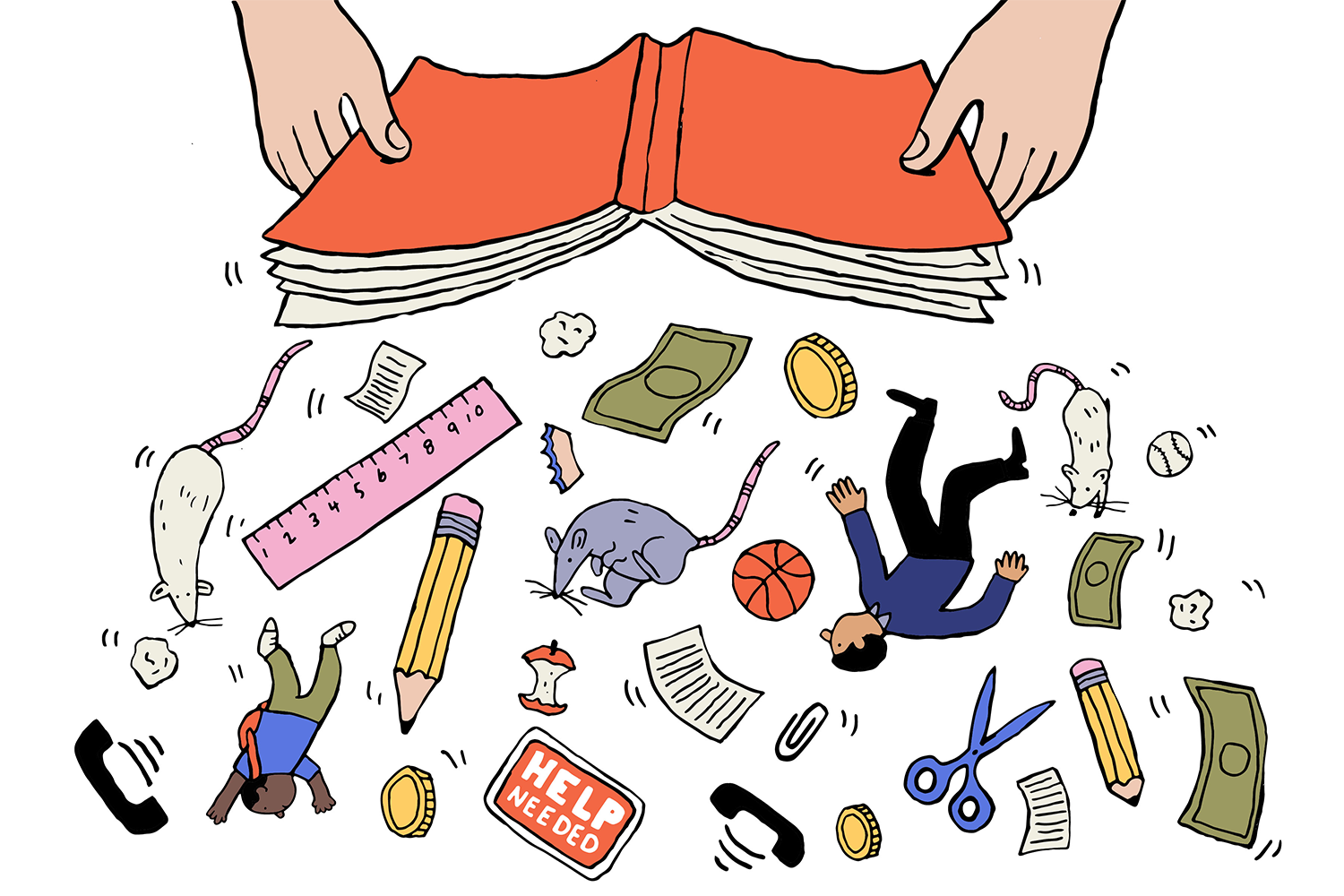
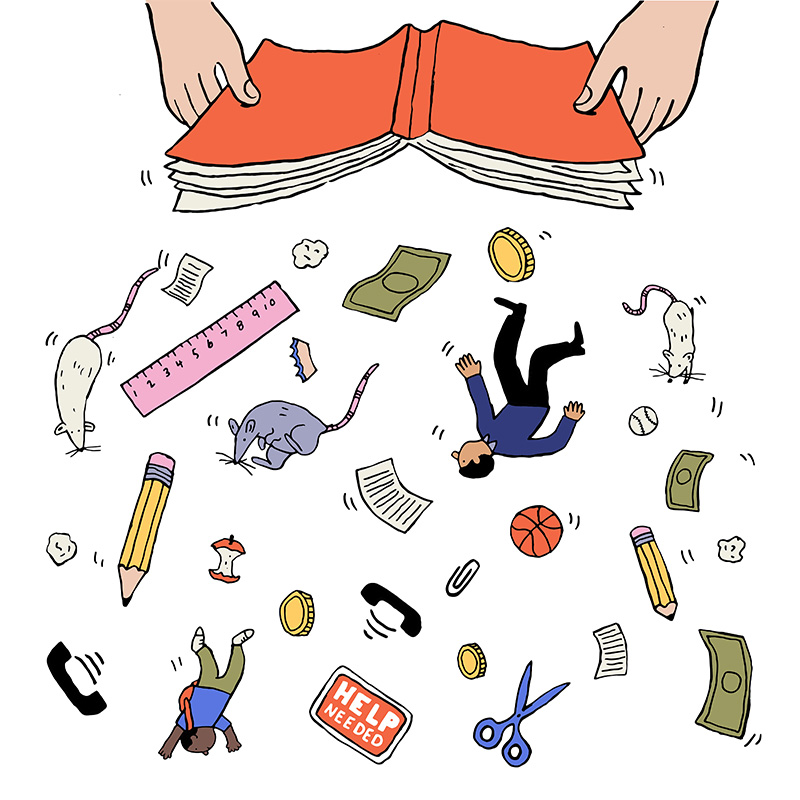
When education funding researcher Hugh Mackenzie talks about public schools in this province, he likes to start with the positive.
“This morning,” he says, “at nine o’clock, something truly amazing happened in Ontario; two million kids turned up in publicly funded buildings, and sat down at desks in publicly funded classrooms, and continued the process of becoming adults with the help of publicly funded teachers.”
As reporter Wency Leung writes, that process is a kind of miracle—a collective investment in the wellbeing of kids and in our future. Ontario has one of the highest participation rates for public education in the world. Our schools should be the crown jewels of our society. They should be the thing we brag about when we travel internationally, alongside our socialized health care and the fact we’re the birthplace of Martin Short. They should be excellent.
They are not.
Over the past decades, piece by piece, cut by cut, our schools have been chipped away at until, as Toronto District School Board (TDSB) vice-chair Neethan Shan commented at a board meeting in June, “we are not able to recognize the schools that were there 20 years ago.”
Today, Ontario’s funding per student is approximately a third of what’s spent in peer jurisdictions like New York and Massachusetts. In Toronto, the TDSB’s funding gap—the difference between what it receives from the province and its actual costs—was roughly $200 million last academic year. Since 2019, at a time when students need more help than ever to overcome past-pandemic learning loss, the board says it’s made $64.7 million in cuts.
The effect of those cuts, over the years, isn’t always immediately apparent. For most people, schools are places you experience when you’re a kid, and then again maybe 20 years later, as a parent. The accumulated impact of decades of compromises can be hard to chart.
In “A Thousand Cuts”—The Local’s new education series—Wency Leung lays out the specific consequences of this lack of investment and care in eye-opening detail.
“It’s not just the mice and the rat infestations, or the roofs that leak, the windows that need replacing, or the lack of air conditioning and adequate ventilation,” she writes. “It’s not just the shortage of staff—of teachers, principals and vice-principals, educational assistants, early childhood educators, office support workers, caretakers—or the lack of basic classroom supplies, like text books, markers, or even tissues to wipe tiny noses. It is the accumulation of all these issues that make teachers and parents despair over the current state of the public education system.”
That’s a failure of the Ford Conservatives, whose per-pupil education funding has not kept up with inflation. But it’s a failure that’s bigger than any single provincial government. Collectively, we have not made maintaining and updating our education system enough of a priority. While political parties jostle over housing, immigration, and health care, there are not enough leaders championing public education. Our schools do not get the media coverage they deserve. The TDSB serves 235,000 students—a population bigger than the city of Regina—but the life-altering decisions it makes aren’t given nearly enough scrutiny.
Next week, I’ll send my kids to their local TDSB school, along with almost a quarter of a million other Toronto students. The fact that they’ll be going into their publicly funded classrooms, taught by skilled and caring teachers, with the rest of the kids who live in their neighbourhood remains a kind of miracle. But they’ll also be entering classrooms without air conditioning. They’ll be taught by teachers without enough prep time, in a building without enough caretakers, alongside classmates whose needs aren’t close to being met.
Toronto, a wealthy city in a wealthy country, should be leading the world when it comes to public education. The fact that rather than reaching for greatness we’re allowing our schools to erode—cut by cut, compromise by compromise—shows that, despite seeing the clear results of decades of underfunding, we still refuse to learn our lesson.
The Local wants to hear from you. If you have any news tips for our ongoing education series, please reach out to us at info@thelocal.to

